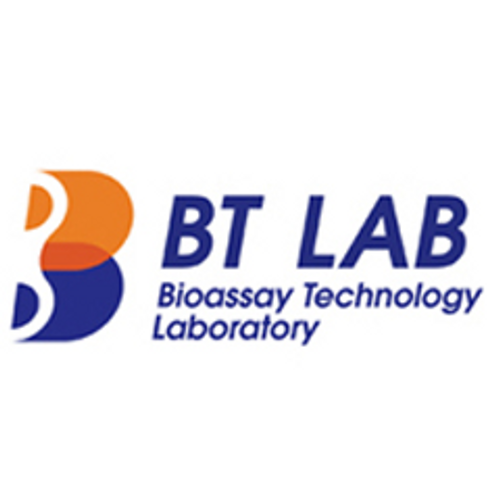Product Description
Human Serine/threonine-protein kinase RIO1 (RIOK1) ELISA Kit | AE22088HU | Abebio
Species Reactivity: Human (Homo sapiens)
Abbreviation: RIOK1
Alternative Name: AD034; FLJ30006; MGC12903; bA288G3.1; RIO kinase 1|prematurely truncated due to insertion of intronic sequence
Application: ELISA
Range: 0.312-20 ng/mL
Sensitivity: 0.133 ng/mL
Intra-Assay: ≤3.9%
Inter-Assay: ≤7.1%
Recovery: 0, 98
Sample Type: Serum, Plasma, Other biological fluids
Detection Method: Sandwich
Analysis Method : Quantitive
Test Principale: This assay employs a two-site sandwich ELISA to quantitate RIOK1 in samples. An antibody specific for RIOK1 has been pre-coated onto a microplate. Standards and samples are pipetted into the wells and anyRIOK1 present is bound by the immobilized antibody. After removing any unbound substances, a biotin-conjugated antibody specific for RIOK1 is added to the wells. After washing, Streptavidin conjugated Horseradish Peroxidase (HRP) is added to the wells. Following a wash to remove any unbound avidin-enzyme reagent, a substrate solution is added to the wells and color develops in proportion to the amount of RIOK1 bound in the initial step. The color development is stopped and the intensity of the color is measured.
Product Overview: RIOK1 includes two alternatively spliced transcript variants, which encode different isoforms. The function of this gene has not been determined. RioK1, a new interactor of protein arginine methyltransferase 5 (PRMT5), competes with pICln for binding and modulates PRMT5 complex composition and substrate specificity. RioK1 and pICln bind to PRMT5 in a mutually exclusive fashion. This results in a PRMT5-WD45/MEP50 core structure that either associates with pICln or RioK1 in distinct complexes. RioK1 functions in analogy to pICln as an adapter protein by recruiting the RNA-binding protein nucleolin to the PRMT5 complex for its symmetrical methylation. The exclusive interaction of PRMT5 with either pICln or RioK1 thus provides the first mechanistic insight into how a methyltransferase can distinguish between its substrate proteins.
Stability: The stability of ELISA kit is determined by the loss rate of activity. The loss rate of this kit is less than 5% within the expiration date under appropriate storage condition. The loss rate was determined by accelerated thermal degradation test. Keep the kit at 37°C for 4 and 7 days, and compare O.D.values of the kit kept at 37°C with that of at recommended temperature. (referring from China Biological Products Standard, which was calculated by the Arrhenius equation. For ELISA kit, 4 days storage at 37°C can be considered as 6 months at 2 - 8°C, which means 7 days at 37°C equaling 12 months at 2 - 8°C) .
 Euro
Euro
 USD
USD
 British Pound
British Pound
 NULL
NULL












